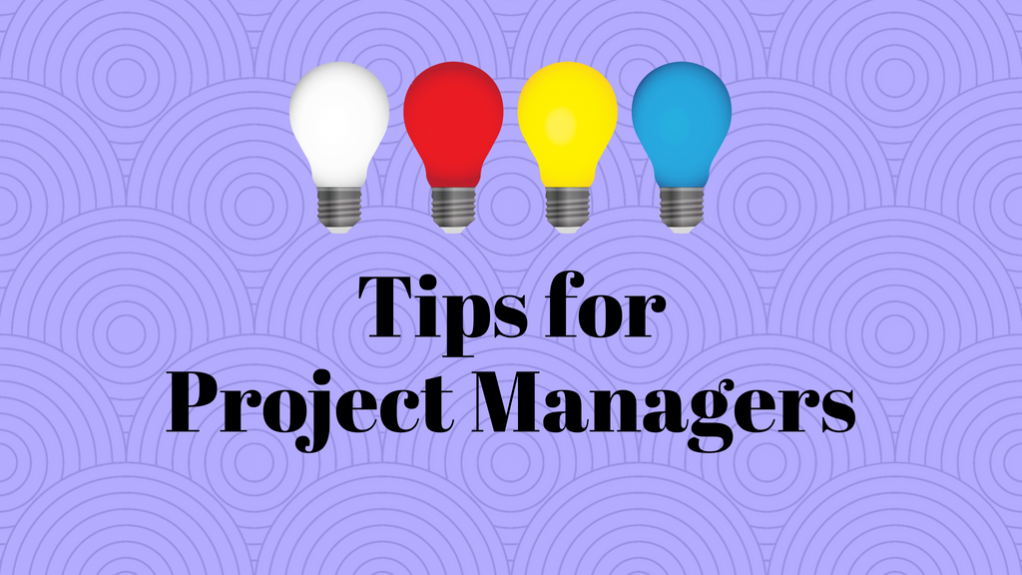The article below “9 Best Apps and Essential Tips for Project Managers” was written by Anastasia Sidko and published on Upwork’s Hiring Headquarters. It covers nine of the top applications for project managers.
To manage a project effectively—delivering high-quality results on time and on budget—it helps to find the right approach and have tools to help keep on track throughout each stage of a project. Here are tips to help you do so, along with a look at some of the most popular apps to help you keep the momentum going.
Planning and Execution
Before rushing to action, take sufficient time to create a thorough project plan: Define the goals, analyze the situation, and identify all possible risks. By doing this up-front work before the project begins, you help ensure the team can overcome any unexpected challenges efficiently and successfully.
Whatever methodology you use for your workflow management — such as the Waterfall method or the Agile approach — the planning stage will typically include these steps:
- Establish the goals of your new project. Make sure project goals are aligned with your business needs (your client’s or your team’s needs if it’s an in-house project) and meet the SMART criteria (Specific, Measurable, Attainable, Relevant, Time-based).
- Define key performance indicators to evaluate your project’s success. The KPIs may vary depending on the project, but basic types should consider time, resources, budget, quality, and overall effectiveness.
- Set up milestones and/or iterations. Divide the project into phases and check the success of each rather than evaluating the project only upon completion. This will help to reveal problems as they arise, so you can resolve them quickly and adjust expectations and timelines if needed.
Project Communications
Once your plan is in place and the objectives and milestones are clear, you can confirm your project team.
- Determine the makeup of your team. Define the key skills and expertises you need, as well as any gaps you have to fill. You can clarify responsibilities using the RACI model: Responsible for getting the job done; Accountable for final decisions and completion of tasks; Consulted before a decision is taken; Informed about the decision taken.
- Create a clear communication plan. Ensure communication among team members is smooth and that everyone knows what his or her responsibilities as well as what other team members are responsible for. Make certain all necessary information is clear and accessible.
- Encourage openness. Keep yourself open to all ideas, even if you suspect you’ll have to abandon them later. Encourage all stakeholders to voice their opinions so you can form a clear picture of the situation before making major decisions.
Evaluating Results
Don’t miss a chance to benefit from your own experience: Use each of your projects for learning and improving. You can analyze both the project as a whole and the implementation of its components. Here are some questions you might want to ask yourself:
- What were the three main accomplishments?
- What were the three main challenges?
- How did the project’s actual ROI compare with the planned ROI?
- Was the project schedule outlined correctly?
- Did all the team members fulfill their roles?
- Was communication within the team efficient and effective?
- What can I do better next time?
Finding the Right Tools
Tools can be key to getting things done effectively. Since work is becoming more and more mobile, project management mobile apps are gaining popularity because they help users monitor and control project processes from anywhere.
Choosing the best app for you depends largely on the way you plan and execute your projects. For example, classic Waterfall methods work best with Gantt charts and sequential project management tools, while apps based on the Kanban method are more convenient for more incremental Agile processes. Below are some powerful apps to help simplify a project manager’s life.
Asana
Asana: This easy-to-use task management app, which keeps all your work organized in one place, is especially popular with marketing teams. According to Upwork’s latest Marketing Skills Index, “Asana work tracking” is the fastest-growing marketing skill among freelancers.
Asana lets you rearrange tasks, move them between projects, assign them to specific team members, and track each task’s status. You can break your project down into sections and follow progress on a dashboard.
This tool is particularly interesting for its brainstorming features. You can add ideas to a project, then vote on them using hearts. By sorting the project by the number of hearts you can discover which ideas rise to the top.
Price: Free for teams up to 15 members; the premium plan is $9.99 per user per month.
Trello
If you don’t want to deal with overly complicated tools and consider yourself a visual person, Trello is probably the best project management solution for you. Built around the Kanban method, this app helps you clearly visualize your workflow and track progress.
In Trello, you organize your project with boards containing cards, which in turn contain task details and any necessary attachments. You can move cards to the appropriate boards with a drag-and-drop feature, graphically demonstrating how much of the project is completed.
Price: The basic plan is free; plans with additional features start at $9.99 per user per month.
Basecamp
Basecamp allows you to organize all your projects and their details under one virtual roof. Organized around task lists, messaging threads, and calendars, this app comes in handy when a number of your projects are similar, as you can create a project template that includes all the basic steps and frequently used messages and files. This is a handy time-saver, as you don’t need to build projects from scratch each time.
A convenient feature for teams working across different time zones is the notification scheduler Work Can Wait. If you receive a message or notification outside defined hours, the scheduler will hold onto it until your work day begins.
Price: $99/month.
Wrike
In a nutshell, Wrike, is an all-in-one project management app with essential features such as custom dashboards, extensive collaboration support, document sharing, and detailed time tracking. It’s especially good when you want to mix traditional Gantt chart planning with modern-style project communication.
You can track your project progress with the baseline chart, performance chart, or work progress chart. And with a real-time news feed, you can easily see which tasks are being completed at any given moment.
Price: Free for teams of up to five users; prices for larger teams start at $9.80 per user per month.
Podio
Podio is a flexible app that you can adjust to your business needs. The app is built around customizable workflows, which makes it easy to set it to match the way you work. Podio allows you to choose how tasks are laid out—i.e. lists, cards, or calendars—so you can visualize your work in the way that best suits your project or work style.
If you need more than a task management and collaboration tool, Podio has additional features, such as an intranet, and you can also build a lightweight CRM with it.
Price: From $9/month.
Zoho Projects
Zoho Projects is multi-functional: It provides bug tracking and time tracking along with other features you need for both Agile and traditional project management.
Zoho Projects aggregates all tasks and issues on a single page, so you can get a snapshot of the whole project and ensure nothing slips through. You can also choose your preferred way of task visualization: Lists, Kanban boards, or Gantt charts.
Price: You pay for the number of active projects. One project for free, then prices go up starting from $25/month.
Pivotal Tracker
This app was designed by Pivotal Tracker specifically to meet the requirements of Agile software development. Pivotal Tracker’s numerous integrations include JIRA, GitHub, and Zendesk. Project tasks are organized in lists, where you can easily see what needs to be done next. The Icebox feature allows you to keep new or unprioritized tasks outside your existing projects.
Another cool feature: Pivotal Tracker allows you to estimate your project velocity. Each task can be assigned a number of points depending on how much effort is needed to complete it. You can plan future iterations based on the average number of points required for previous iterations.
Price: Free for teams up to three members; pricing from $12.50/month.
Teamwork Projects
Teamwork Projects is a comprehensive tool to help organize all your project details: Tasks, files, messages. What makes this app particularly handy is that it allows you to break down your workflow in different ways: While you can set an overall project deadline, you can also set due dates for single tasks or groups of tasks. This gives you more flexibility over your milestones.
This app also allows you to track all the time you’ve spent on a project. Knowing how long it takes to complete certain tasks can help you plan more efficiently going forward.
Price: Starts from $49/month.
Freedcamp
Freedcamp provides a full range of project solutions such as time tracking, issue tracking, invoicing, project templates, and CRM. Its flexible user permission system enables you to configure access for each user and or for groups of people.
What is unique about this app is that each user can choose the best way to organize and visualize his or her own work, and they can switch between standard listview style and Kanban boards at any time. The main downside? Freedcamp doesn’t currently offer an Android version.
Price: The app is free to start; paid plans include additional features.
Mintent
The Mintent web-based app is tailored specifically to the needs of content marketers to help them through planning, execution, and evaluation.
A global editorial calendar helps provide structure: In one screen you can see multiple calendars or defined content types—such as blogs, social media posts, and webinars—using defined color schemes. You can quickly reschedule posts with a drag-and-drop feature.
Standardized content workflows help simplify the content creation process: As each stage is completed, Mintent will automatically send notifications to the next person who needs to take action.
To help with evaluation, Mintent provides analytics integration that helps track ROI, find the most successful pieces of content, and reveal gaps in your strategy.
Price: While pricing isn’t available on their website, you can sign up for a 14-day trial or demo.
With demands on our time and attention in constant churn, knowing how to keep track of projects and prioritize your time is top of mind. An effective approach to projects, with the support of tools that fit your needs and workflow, will help you stay on track and in control.




